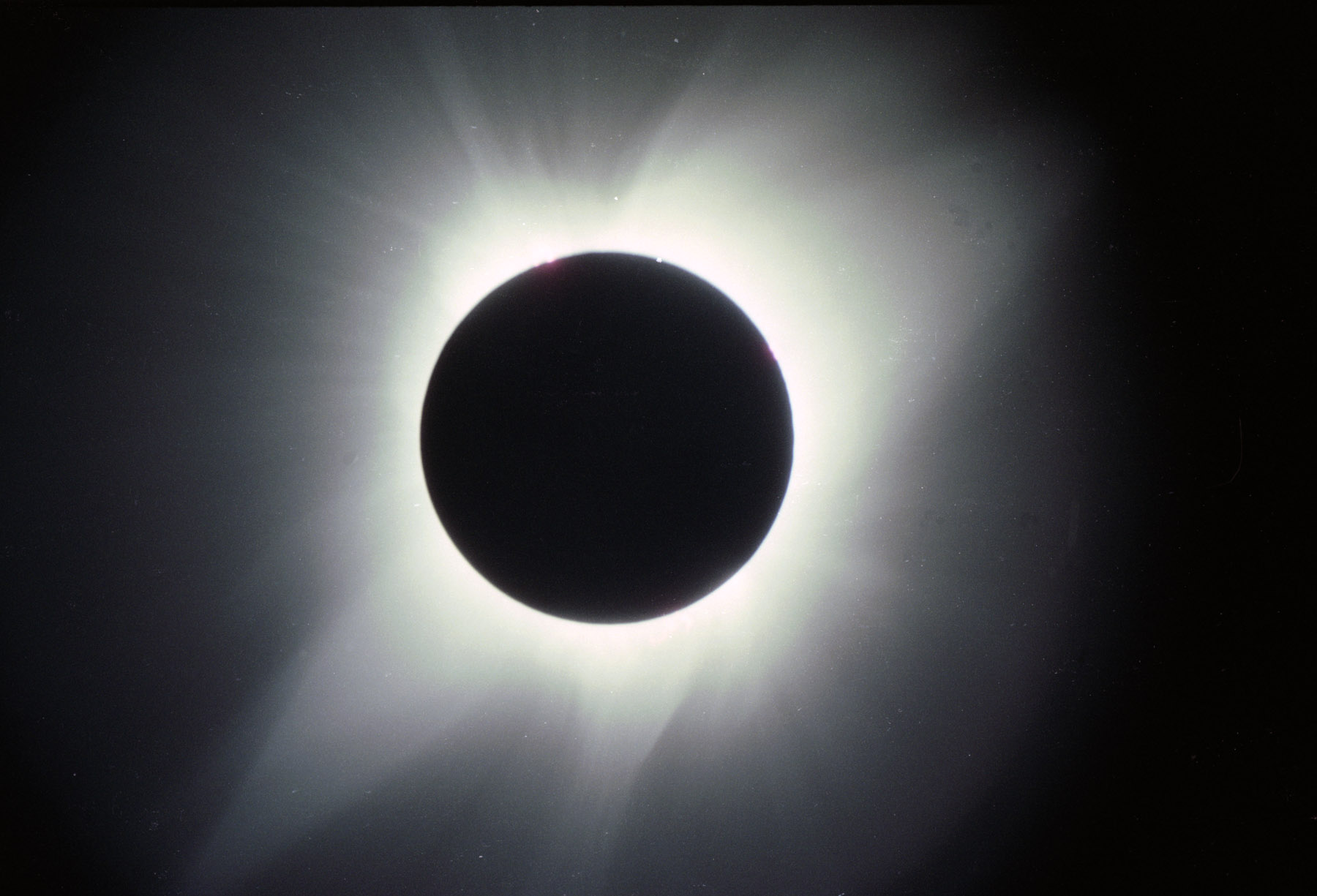|
Michael A. Stecker
|
|
The Solar Corona on
the July 11, 1991 total
solar eclipse
Definition A corona is a type of plasma or atmosphere of the Sun or other celestial body, extending millions of kilometers into space, most easily seen during a total solar eclipse, but also observable in a coronagraph. The Latin root of the word corona means crown. The high temperature of the corona gives it unusual spectral features, traced to highly ionized Iron (Fe-XIV) which indicates a plasma temperature in excess of 1-million degrees Kelvin.
Light Sources 2. The F-corona (F for Fraunhofer) is created by sunlight bouncing off dust particles, and is observable because its light contains the Fraunhofer absorption lines that are seen in raw sunlight; the F-corona extends to very high elongation angles from the Sun, where it is called the Zodiacal light (see: photo). 3. The E-corona (E for emission) is due to spectral emission lines produced by ions that are present in the coronal plasma; it may be observed in broad or forbidden or hot spectral emission lines and is the main source of information about the corona's composition. Physical Characteristics The Corona is not always evenly distributed across the surface of the sun. During periods of quiet, the corona is more or less confined to the equatorial regions, with coronal holes covering the polar regions. However during the Sun's active periods, the corona is evenly distributed over the equatorial and polar regions, though it is most prominent in areas with sunspot activity. The solar cycle spans approximately 11 years, from solar minimum to solar maximum, where the solar magnetic field is continually wound up (due to a differential rotation at the solar equator; the equator rotates quicker than the poles). Sunspot activity will be more pronounced at solar maximum where the magnetic field is twisted to a maximum. Associated with sunspots are coronal loops, loops of magnetic flux, upwelling from the solar interior. The magnetic flux pushes the hotter photosphere aside, exposing the cooler plasma below, thus creating the dark (when compared to the solar disk) spots. Reference: http://en.wikipedia.org/wiki/Corona |
